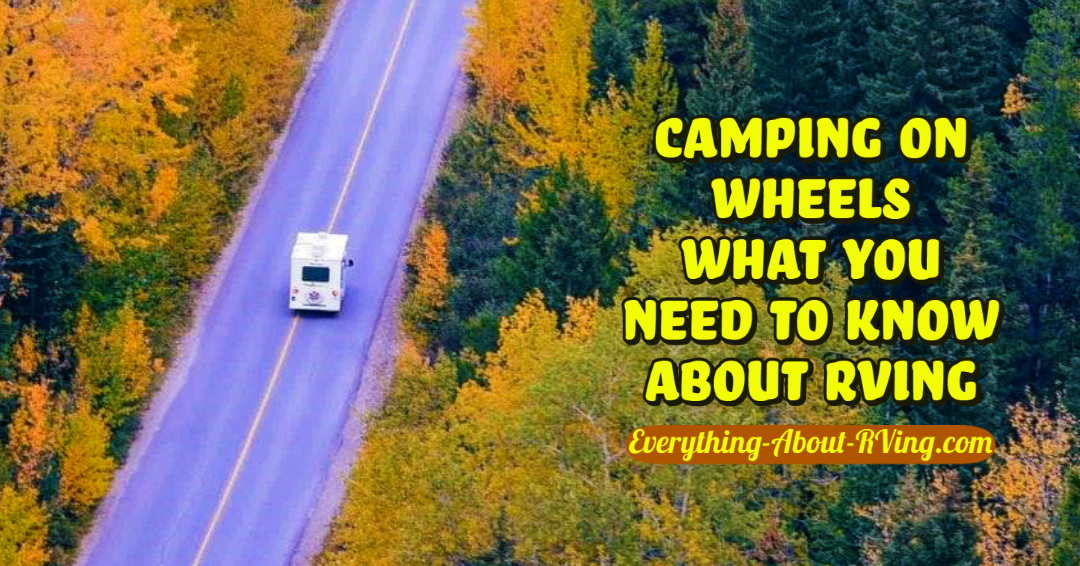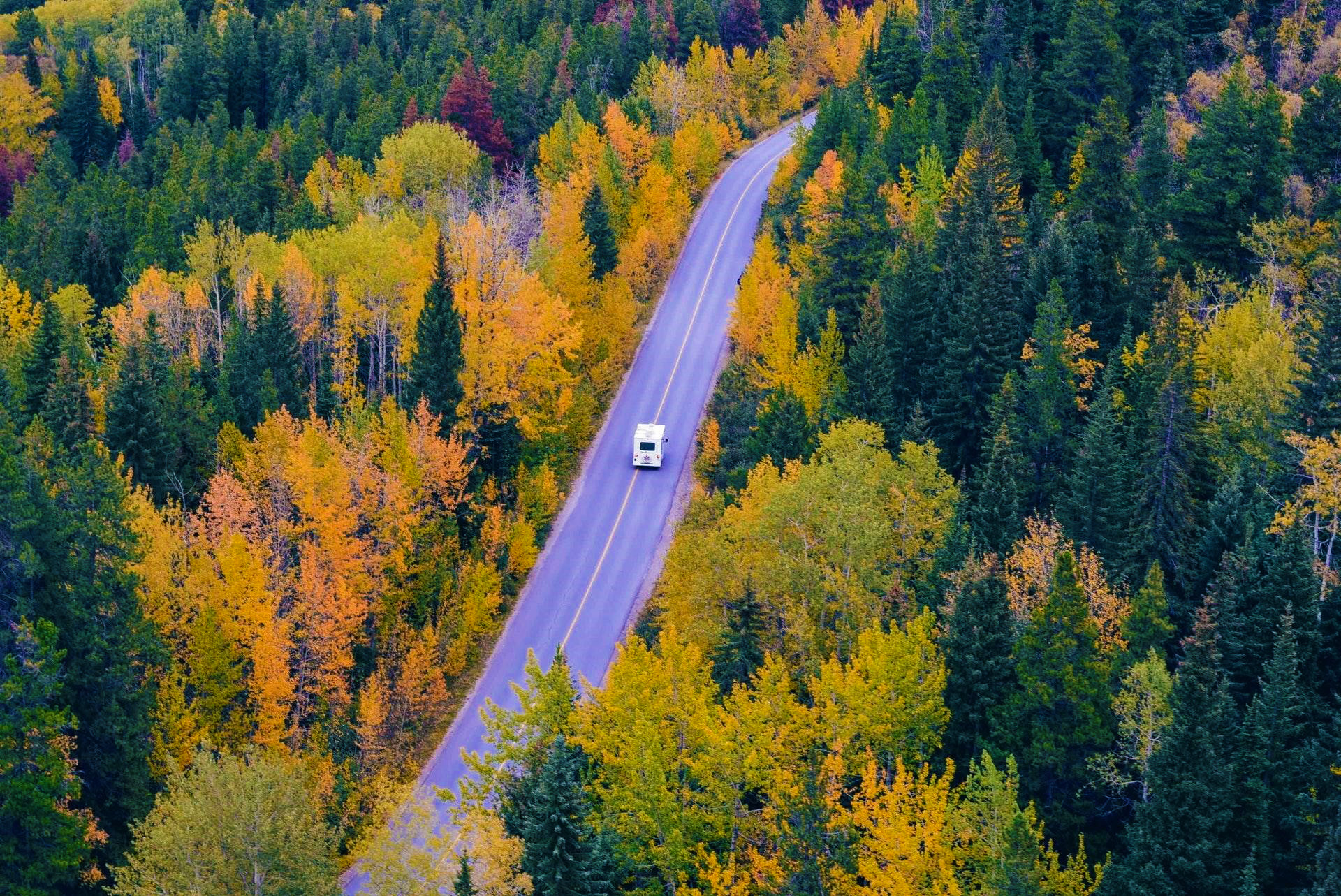Camping on Wheels
What You Need to Know About RVing
Camping on wheels has some great advantages over tent-camping
By Kristin Harris
Everybody needs a place they can retreat to for some quality time. That place can be at a campground with the smell of barbecue and the distant sound of a flowing river. Or it can also be a spot in the middle of a forest where you can find a hiking trail that leads to an overlook of the river.
A place to unwind and relax can mean different things to different people. What many people would imagine when talking about camping is that it would be a family outing in the woods or at a National Park. When you go camping in an RV, you’re bound to find your own special destination.
When you camp on wheels around other RVers, they start out as strangers but can end up becoming your friends. When you spend time with those whom share the same values and interests as you,, new friendships will develop.
If you cannot decide whether you should buy an RV or not, you should rent one First
If you’re thinking about buying an RV for you and your family, then you need to find out which RV suits your particular Lifestyle. So before you make your purchase, you should rent an RV for a week or two to get a good sense of what it’s like to go out on an adventure and explore the places you’ve never been to. By renting the RV you learn what camping on wheels is all about.
Once you’ve chosen the right RV for your lifestyle, then it’s time to get it for its first trip—depending on where you’re planning to go and for how long you’ll be driving. There are a couple of essential things you need to be ready for. While it’s tempting to pack every little item that gives you comfort from your house to your RV, you’ll soon find out that there’s a smarter way to do it without overloading your RV. Below are the fundamentals of RV camping every first-timer should know.
Do your research and learn how best to maneuver your RV into your chosen campsite
There are more than enough campgrounds in this country, including nearby Canada, that can take you a lifetime to visit. Even if you camp out almost every night or make the decision to live in your RV full-time, you still won’t be able to visit all campsites out there. You won't be able to see everything there is to see, but you will have a lot of fun trying.
You can expect every campsite to have advantages and challenges. Start with a camp spot that doesn’t charge you anything for staying (this is called "boondocking"). These types of camping sites usually do not come with amenities such as water, electric and sewer hookups, so your RV needs to be fully stocked and self-contained. There’s a wide range of boondocking areas available in National Forests or on lands run by the Bureau of Land Management (BLM). There are also a couple of states, city, and county parks and a few conservation areas that offer free boondocking camping.
Most first-timers are advised to opt for BLM areas. There are many options to choose from. The lands or areas they manage are those that are open for grazing, logging. You should to call and inquire months before your planned camping trip, so you’ll know how long you are allowed to stay and it you need to fill out a permit. Some will let you stay for weeks or even a month. Rules and regulations vary, so you have to do your research prior to your trip.
Also, calling ahead of time can help you get a better idea of what the terrain or surfaces are like in your chosen camping destination. Some areas, especially BLM run landscapes, are known to have a herd of cattle or sheep or other wildlife roaming around near the campsites every now and then. It helps to know what you, your RV, and your companions are up against, so you’re better prepared for them.
Seasonal changes can also drastically alter surface conditions from smooth to rough or from rocky to muddy. Getting your RV stuck in in mud or sand somewhere and not knowing where to ask for help is something you don’t ever want to experience. Also, you don’t want to take routes that are too steep, have low clearances, or too slanted, especially if you’re driving a larger RV. Asking the right questions from the campsite coordinator about the campsites available before your trip will help you in selecting which routes are suitable for your RV to take and which sites are favorable to spend the day or the night in.
Prep your RV for camping and turn it into a proper motorhome
Camping in an RV can give you an entirely new level of travel comforts. You’ll be doing the same basic routines that you do at home: eat, sleep, shower, go to the bathroom, and repeat them all over again on a daily basis. Unlike camping in tents, RVs offer a much larger space. And it’s a lot more convenient to be in a fully self-contained RV when camping.
Before you leave with your RV to go camping you'll need to perform a pre-trip. A pre-trip involves checking tires, fluids, Propane levels, fresh water levels, etc. If you are going to boon-dock, you will not have electrical hookups, so you need to make sure that your RV's generator is working properly.
What are your RV's electrical needs
Depending on what campground you decide to stay at, you will have to check to make sure what type of electrical hookups they have available. In most RV Parks you will have a choice of either 50 amp or 30 amp electric connections. In very rare instances, you may only have a 15 amp connection, so you may be limited on what electrical appliances that you can or cannot run in your RV.
You won’t have trouble doing the math when calculating for power. An air conditioner (AC) will need at least 15 amps to hum and get running. So, if your RV has a 30-amp capacity, you shouldn’t turn on the AC if you want to toast bread or cook eggs. A standard toaster needs about 15 amps while an egg cooker runs on at least five amps. The more you cook, the more the math gets easier. Another trick that works best for campers is by labeling each appliance inside the RV. That way, you won’t run into any danger of weighing down your power supply. Don’t forget to remind your travel companions that you can’t run all appliances at the same time.
Packing Your RV
It’s also best to pack in stages. Trying to pack everything all at once will only make you forget about the important stuff. Best to take at least a day or two to think about the kitchen supplies you’ll be needing then load them in after. There are RV packing lists that are available on the internet that will help you keep tracke of what you are loading in your RV.
Next day, you can do beddings, blankets, and beanies to keep you warm. When you’re done with that, set another day for items that will help you pass the time like board or card games—they’re always fun. Groceries you can do by batches. Don't forget you may run across a Walmart or other shops while heading to your camp sight. You can always stop and get your groceries there, that way you won’t overload your refrigerator. Start stacking up your RV with the necessities then buy the rest of the stuff you need on the road. To avoid getting overwhelmed, dedicate enough time to really think through the food you’ll be cooking and eating while in the RV. Make a checklist and plan the dishes to work out the necessary ingredients. Decide on the items that you’ll be bringing with you from the start and those that you’ll be buying during your scheduled stops.
Make sure to manage the weight of your RV
Also,
it’s not just electrical loads you need to be concerned about. There’s the
physical load as well that you need to watch out for and continuously monitor.
Make sure that you spend ample time to read your RV manual. You need to
know your RV’s maximum load capacity. Factor in your passengers, appliances, wardrobe, supplies, barbecue grills, meats, and other items you’ll be bringing along with you. That's why it's better to do your packing gradually so you’ll know which things you can do without and which ones you absolutely need.
When you’re done packing for the entire trip, with your complete list of everything on hand, search for the nearest truck weigh station and have your vehicle checked. If you do go over the limit of your RV, this is one of those God-mode moments where you must make a choice between the good and the bad load. Get back to your everything-list. Choose only those items that you have to take with you and unload those that don’t matter as much for the weight to even out. It also helps if you keep the extra weight off the rig by taking in enough water or fuel only for the first few miles and get more as you need them along the way.
You’re bound to hit a bump or two or go through a rocky road. Check your cabinets, especially those that hold your kitchen appliances and supplies, and see if they can be sealed or locked. If not, you’d need to reinforce them by tying up cords or other types of durable fasteners around them. Find what works for your RV and stick with them. For extra protection, make sure you sign up for an insurance policy for your vehicle. You can always plan your first trip with obsessive-compulsive like attention to detail. But nothing can prepare you enough for accidents. Be sure you’re covered and add your rented RV to your current policy. With everything set in place, the only thing left now is for you to focus on one thing— having the best RV camping trip ever.
Do you have any suggestions or comments on this topic? You can add them to this page by using the comments section located below.





